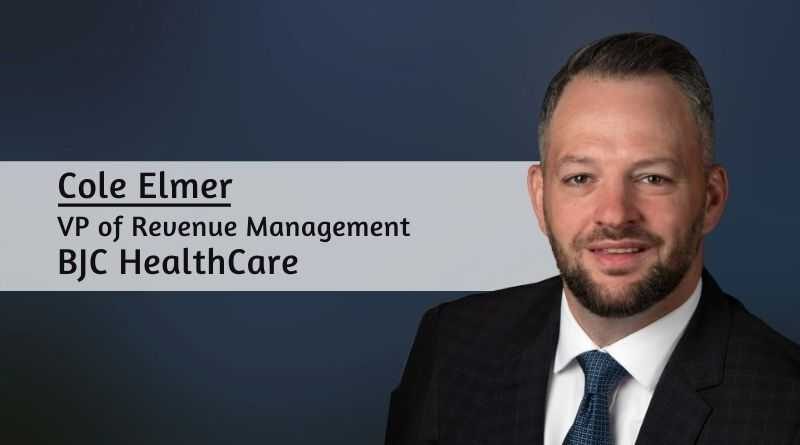Maintaining Operations and Enhancing Culture Virtually – Evolutionary Guide
By Cole Elmer, VP of Revenue Management, BJC HealthCare
When the unprecedented COVID19 pandemic hit, BJC, like many other health systems, scrambled to take care of their most valuable assets…their people. We rapidly deployed IT resources in an attempt to ensure every employee had what they needed on each of their computers to effectively and compliantly to their jobs. For BJC, reluctantly, there was already established work from home presence in place among Revenue Cycle that allowed us to leverage the already existing infrastructure in place.
Once the dust had settled and the shock of the exercise of getting everyone home had surpassed. It was time to take a step back and start thinking about how to maintain a world-class revenue cycle and, most importantly, the culture virtually. Below are some of the practical and executed learnings while moving our revenue cycle virtually during the pandemic:
Communication: In times of uncertainty, there is no such thing as over-communication. One of the things that our Chief Revenue Cycle Officer, Tracy Berry did was establish a bi-weekly leadership huddle that comprised of supervisors and above across the entire revenue cycle. This has turned out to be a great meeting where we talk about what is happening across BJC, and prior to the call, questions are solicited and answered during the brief 45-minute meeting. This meeting has allowed for an excellent cadence to keep everyone informed and answer any questions that everyone may have and dispel any rumors or angst from working at home that may have occurred, after all, a negative seed of thought can turn into a tree if not addressed timely.
Be Visable: One of the established rules that we also try to adhere to is if you are talking, try to turn on your video cameras. I must admit, it can be uncomfortable at first, but it further allows for that human connection as much as possible in a virtual environment. It is nice to see facial inflections as you are talking to someone and lets them know you are actively listening.
Huddles: With the introduction of Microsoft Teams, it was easy for us to facilitate virtual huddles. Other platform works as well such as Zoom and WebEx. To best facilitate huddles, we established a tier huddle system similar to how it is conducted on the clinical side. In the tiered huddle system, you could add as many tiers as you needed, but for Revenue Cycle, BJC revenue cycle established four tiers that were conducted daily. This allowed for a pulse to be kept on the overall operations in addition to resolving issues quickly through a more streamlined communication process. Below is an example illustration of the huddles:
| Tier 1a | Staff to Supervisor to Manager | 7:45 – 8:00 AM |
| Tier 1 | Supervisor to Manager | 8:00 – 8:15 AM |
| Tier 2 | Manager to Director | 8:15 – 8:30 AM |
| Tier 3 | Director to VP/Exec Dir | 8:30 – 8:45 AM |
| Tier 4 | VP/Exec Dir to CRO | 8:45 – 9:00 AM |
A guiding principle is to leverage this meeting that fits your team’s needs, some are metric-driven and some are escalated issues. We have also emphasized that no update is an update, and that’s ok. We wanted to have this standing meeting just in case and we almost always find ourselves taking the whole time.
Culture: One of the questions as a leader that I ask myself and continue to challenge myself with is, “how can we keep the culture aspect alive virtually?” One of the things that I observed going virtual is that it didn’t suffer. In many cases our connections got stronger. Staff still felt as if they were supported and in many cases, they felt as if they were supported more. Everyone was a chat away or a phone call away. With the implementation of the huddles, issues always felt like they were getting escalated, addressed, and resolved in a timelier manner. Another positive was that much of the staff also enjoyed the work life balance that was further enhance by working from home by not having the commute to work everyday.
One noticeable observation was how each person got their re-charge personally and professionally. You can often feel like you are in isolation being virtual a 100% of the time. Personally, I get my re-charge by being around others so I not only had to evaluate how I could continue to fill that void but, as a leader, evaluate how others get their re-charge as well to try and meet them at that level to keep up moral. Below are a couple of ideas:
Open Door Meeting: While discussing openly how I missed talked to associates in the hallways and the random “flash meetings” that usually resolved open questions or issues among staff, one of my managers suggested having a one hour open session every other week that left it open for staff to come and go as they please and ask questions work-related or just to talk about how everyone is doing. When I did the inaugural session, I honestly didn’t know what to expect only to find such satisfaction of getting that connection with the staff. All of the feedback was positive afterward and we have continued to do them since.
Happy Hours: Work is great, but so is connecting with others about life outside of work. Virtual Happy Hour was not a new concept and it made a wave over social media when COVID19 first hit, but it is still a big hit among my team as an outlet to re-charge and socially connect.
Lunch: One idea was to expense a lunch delivered by a food delivery service company (Grub Hub, Uber Eats, Etc.) and block an hour just to eat lunch and socialize among your team. This has been another great way to have that social connection that we all crave and have fun while doing it.
Kudos: Who doesn’t like to be recognized!? One idea that we instituted is virtual kudos board through Microsoft Teams, where we share successes. It has been a great way for everyone to share all the great work that individuals are doing to drive results.
In conclusion, being 100% virtual doesn’t have to be a sentence to social isolation. Our team at BJC is constantly thinking outside the box to further engage our staff virtually. We have found that it works, and will continue to evaluate the future of our virtual workforce to see how we can evolve from here while still achieving organizational goals and results. I would encourage leaders with a virtual workforce to keep evaluating and learning what works for your organization to further enhance the employee experience. After all, we get what we put into our people and they deserve our best effort to help them be their best.




